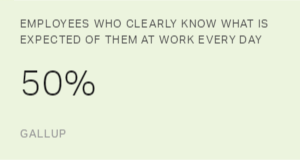Zappos may have discovered that employees need managers after all.
The online shoe and clothing retailer's holacracy management system doesn't appear to be working. According to a recent New York Times article, Zappos continues to "hemorrhage employees" as a result of the companywide implementation of holacracy.
A no-manager approach, holacracy is characterized by a fluid organizational structure in which teams are self-organized and individuals have high autonomy and authority to make decisions at a local level. According to Holacracy.org, holacracy is a "new way of running an organization that removes power from a management hierarchy and distributes it across clear roles, which can then be executed autonomously, without a micromanaging boss."
Unfortunately for Zappos, the holacracy experiment is causing workers to quit in droves, with 14% of employees leaving within weeks of the company introducing holacracy. People within and outside of Zappos are questioning the effectiveness of this organizational approach, which one employee called "painful." This experiment is making clear that managers have a vital place in an organization.
Zappos isn't the first company to struggle after eliminating the manager. As Laszlo Bock, Google's head of people operations, describes in his book Work Rules!, Google similarly tried relieving all managers of their management responsibilities. The experiment was short-lived because of people issues and problems that the company could not handle effectively without managers. Google reinstated the manager role within six weeks. Google's research also showed that workers with the best managers performed better and had lower turnover.
Even for these two innovative, successful companies, it seems that cutting managers causes serious problems for employees. Here are two powerful findings about basic human needs that may shed light on the problems that Zappos and Google encountered in eliminating managers.
Engagement Is Lowest When Employees Feel Ignored
Gallup has learned that employees are more likely to be engaged in their work when their basic needs are met -- for example, they know what it is expected of them at work, have the materials and equipment to do their job right and have opportunities to do what they do best every day. And here's the kicker: Managers account for at least 70% of the variance in employee engagement scores across business units. When it comes to engaging employees and meeting their needs, great managers can be the key to unlocking high performance.
One cornerstone of great management is focusing on employees' strengths. Employees who use their strengths every day are six times more likely to be engaged in their jobs and more than three times more likely to report having an excellent quality of life than those who don't, as Gallup research shows. Workers who know their strengths are 8% more productive -- and teams that focus on strengths every day have 12.5% higher productivity.
In contrast, less talented managers tend to fixate on improving people's weaknesses. This is bad news for performance: Teams led by managers who focus on their weaknesses are 26% less likely to be engaged than teams with managers who focus on their strengths.
However, Gallup finds that being ignored is even worse for employee engagement than having a manager who dwells on weaknesses. Engagement plummets to just 2% among teams with managers who ignore their employees, compared with 45% for teams led by managers who focus on weaknesses and 61% for teams led by managers who focus on strengths.
The data don't lie: Ignoring an employee is one of the worst things managers can do, negating other efforts they make to meet employee needs and drive engagement. If eliminating managers makes workers feel like no one cares about what they need, it follows that employees in that work environment would feel less connected to the company and would be more likely to leave.
Clear Expectations Are a Basic Human Need
As suggested in the Times article, employees in a manager-free work environment may not clearly understand what's expected of them. This is no small problem: Gallup research indicates that clear expectations are the foundation of an engaged workplace that performs at high levels.
Employees require more than a self-established job description; they want someone to talk with them regularly about their responsibilities and progress. The most basic of employee needs, clarity of expectations, is vital to performance.
Setting clear expectations isn't the only employee need that great managers satisfy. Employees thrive when they have a manager who motivates team members, overcomes obstacles, creates accountability, builds trusting relationships and makes informed, unbiased decisions for the good of the team and company. The impact of the manager is one of the most robust insights Gallup has ever discovered. And the many needs that great managers meet -- for example, providing consistent communication and ensuring accountability -- are among the most important drivers of long-term organizational success.
The bottom line is that employees have clear-cut needs, and if these needs go unmet, productivity will suffer and turnover will rise. Though the workplace is changing rapidly, basic human needs have not and will not change. So unless companies satisfy workers' needs, even the most creative human capital strategies are destined to fail. For leaders at Zappos and elsewhere, it's important to take note of unsuccessful workplace experiments -- and enact human capital strategies that are backed by data and that set employees up for daily success.



